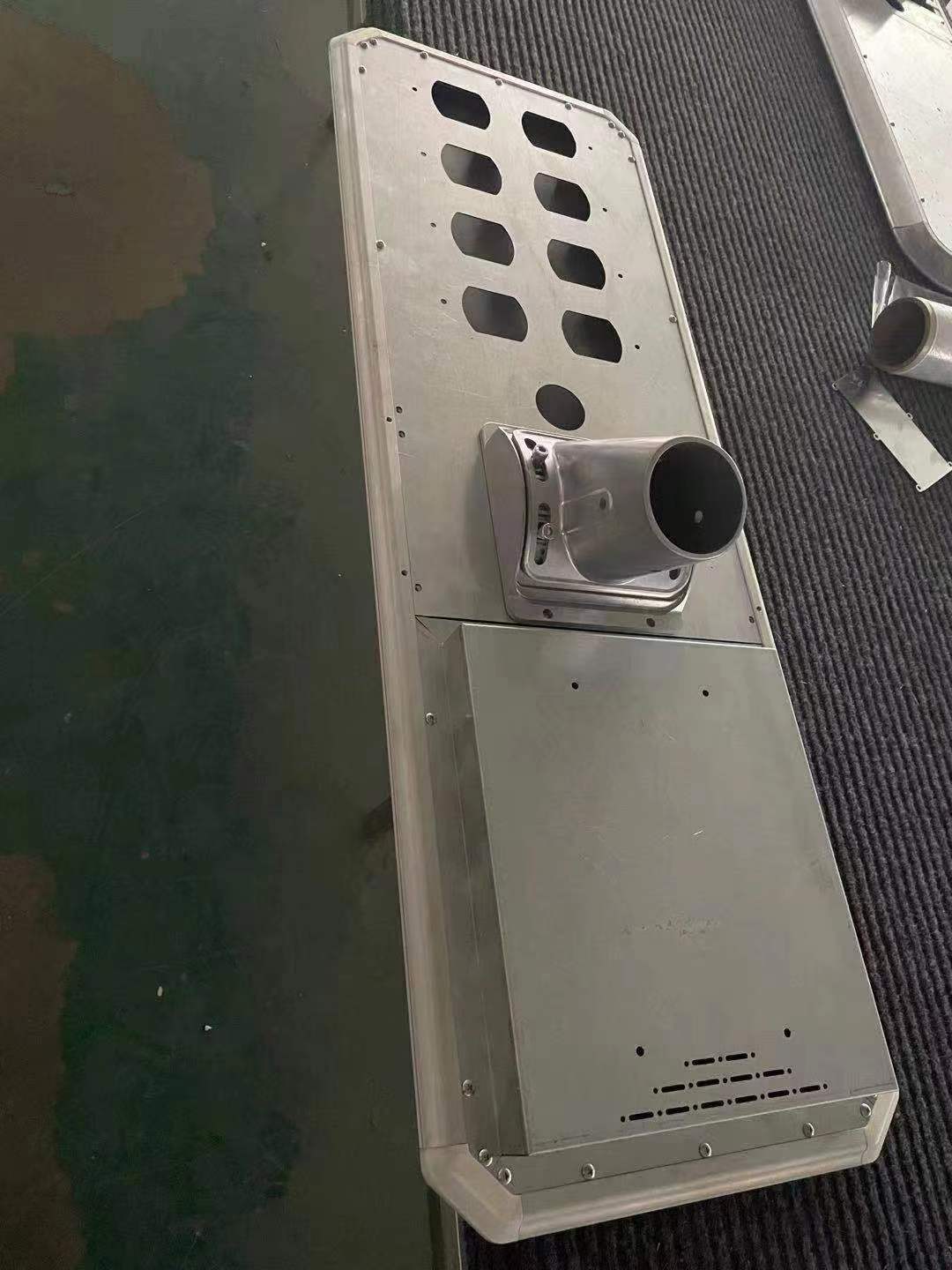
The rise of all-in-one solar street lights is one of the evolutions in solar technology. They are preferred as outdoor lighting solutions because they are self-contained units that integrate all necessary components for solar lighting into one streamlined housing. This means that a battery, LED light, solar panel and controller are combined into a single compact unit. The Solar Light Housing is essential in protecting internal parts which enhances their functionality and aesthetic appeal besides making them last longer.
DER is the best place to find yourself the best Custom Housing solutions. Let’s explore the selection considerations for selecting the housing for your Solar Street Lights.
All-in-one solar street lights are self-contained units that integrate all the necessary components for solar lighting into one streamlined housing. These systems store energy collected from sunlight during daytime hours before using it later at night to power LEDs Their compact conception simplifies installation and reduces entretien, making them an attractive option for residential, commercial, and public space lighting.
Importance of Selecting the Right Housing
The housing of a solar streetlight is not merely a protective casing; it is a key component that affects the overall performance and durability of the light. Whether it’s an integrated solar street light housing or a semi-integrated solar street light housing, material used & design adopted will greatly influence durability & efficiency aspects. Considerations for any given sun-powered lamp post or similar device; therefore, robustness against various weather conditions must be factored with thermal dispersion abilities being among key priorities so that these luminaries can continue functioning optimally despite exposure to extreme environments

Consideration 1: Material Durability
Common Materials Used in Housing
Le solar light housing for all in one street lights is typically made from materials like aluminum, stainless steel, or high-grade plastic. Each material offers different levels of protection, durability, and cost, impacting the light’s overall performance and lifespan.
- Aluminum: Aluminum is widely used in solar street light housing because it’s lightweight and corrosion resistant. The material is strong, can be easily molded into various shapes hence suitable for customized designs.
- Stainless Steel: stainless steel is chosen in places where durability matters most due to its strength and excellent resistance against rust. However stainless steel is relatively heavy compared to aluminum which may increase complexities during installation process
- High-Grade Plastic (Polycarbonate or ABS): High-Grade Plastics are cheap; they’re also UV resistant so can they withstand some harsh environments without showing signs of degradation too soon. They’re light in weight thus making them unsuitable for use under extreme conditions where more robust thermal management capabilities are required by the light housing system though this may not be a big issue since we’re considering budget friendly options here.
Pros and Cons of Each Material
- Aluminum: Light weightiness, corrosion resistance & ease of installation make it popular choice for solar power smart LED street light systems using all in one design. Aluminum however might not last long like stainless steel does under severe conditions
- Stainless Steel: It has great strength plus anti-corrosion properties hence ideal for coastal or industrial areas where solar light housing is exposed to harsh conditions. But keep in mind that higher costs associated with this option will also increase installation difficulties because it’s heavier than aluminum.
- High-Grade Plastic: While being affordable and lighter than other alternatives, plastic housings lack enough toughness needed when dealing with hostile surroundings unlike metals such as steel thus making them unsuitable for use under extreme conditions. Nevertheless they’re best suited for budget sensitive applications where their low cost outweighs any other disadvantages associated with using plastics instead of metals like aluminum or stainless steel for instance.
Consideration 2: Weather Resistance
Importance of Weather Resistance in Outdoor Installations
Outdoor solar light installations must endure various environmental factors, including intense sunlight, heavy rainfall, wind, and fluctuating temperatures. The ability of all in one solar street light housing to withstand harsh climatic conditions over a long period should be taken into account while designing them. If this is not done so and the cover does not have enough protection against weathering; it may allow water penetration which can cause UV degradation or any other problems capable of affecting its functions.
Understanding IP Ratings
Le Ingress Protection (IP) rating is a significant measure that shows how good something can prevent dust from entering into it as well as keeping off moisture such as rain. Among the many requirements required for outdoor use of housings used in solar powered streets lighting systems, an IP65 rating may be considered the minimum standard level for reliability under normal conditions. For example if we look at first figure six means complete safeguarding against dirt while second figure five represents guard against low pressure water projected from nozzle directed towards any direction. Where there are extremely bad weather patterns even higher ratings like IP67 could be more appropriate because they provide extra safety measures.
Consideration 3: Thermal Management
Impact of Housing Design on Heat Dissipation
Thermal management is a crucial aspect of solar street light housing design. Heat is produced by LEDs, batteries and other internal components during operation which if not dissipated properly can result in decreased efficiency, shortened lifespan or even failure of the light. The design should enable escape of heat from the system since this is necessary for sustained performance over time.
Importance of Thermal Management for LEDs and Batteries
Both LEDs and batteries are susceptible to high temperatures. LEDs may become dim or fail prematurely due to too much heat while batteries degrade fast with loss in capacity and life span as some of the effects. All in one solar street light housing with good thermal management ensures that such parts work within their best temperature ranges thereby improving overall system performance and durability. Some solar street light housing manufacturers incorporate heat sinks or ventilation features into the housing design to aid in heat dissipation.
Consideration 4: Corrosion Resistance
Need for Corrosion Resistance in Harsh Environments
Corrosion poses great risk on outdoor lighting especially where there is high humidity, exposure to saltwater (coastal areas) or industrial pollutants among others. Failure could occur if materials used for solar light housing corrode leading into water entering inside through cracks then damaging delicate inner circuits later on resulting in total breakdowns. Therefore choosing materials that have got higher resistance against rusting saves smart solar street lights from this kind of damage forevermore.
Treatments and Coatings for Enhanced Durability
To enhance corrosion resistance, solar street light housing materials can be treated or coated with protective layers. For example anodizing aluminum casings while passivating stainless steel ones followed by powder coat painting them creates barriers against corrosives increasing lifespan particularly within challenging surroundings having lots of chemical salt among other substances which corrodes everything they come into contact with.

Consideration 5: Aesthetic Design
Blending Housing Design with the Local Environment
While functionality is critical, the aesthetic design of solar street light housing should not be overlooked, especially in residential areas, parks, or historic districts. The lighting should complement the surroundings rather than detract from them. Whether it’s an integrated solar street light housing or a semi-integrated solar street light housing, the design can be tailored to blend seamlessly with the environment, featuring modern or traditional styles, and neutral colors that match local architecture.
Customizable Options for Color and Finish
Many solar street light housing manufacturers provide options for clients who want their lights’ appearance customized according to specific projects’ needs such as color finishing shapes etc. One popular method used involves powder coating finishes because not only does this process give durable protection but also offers many different shades thereby enabling designers achieve desired looks without compromising on performance aspects like reliability.
Consideration 6: Ease of Installation
Features That Simplify Installation
The simplicity of installation for solar street lights can be determined by the design of its solar light housing. The use of integrated mounting brackets, lightweight materials and modular components among other features can simplify this process. Ideally, a good housing should easily attach to poles or walls without requiring any special tools or much labor hence enhancing efficiency in outdoor solar light installation both in terms of time and money.
Reducing Installation Time and Costs
Apart from being cost-effective, easy installation also saves on time which would have been used for setting up the solar streetlights. This is because; when project managers opt for those light housings that are easy to fix they facilitate quick deployment of lighting systems thus minimizing downtime and ensuring illumination in public places whenever necessary.
Consideration 7: Maintenance Accessibility
Design for Easy Access to Internal Components
After some time, it may be necessary to carry out maintenance work like changing batteries or upgrading LEDs among others. Housing that allows easy access to internal components can make such tasks quicker and less disruptive. Maintenance can be enabled without having to dismantle the entire light through features such as hinged panels, quick-release fasteners or modular designs.
Importance of Modular Design in Housing
With a modular design for solar street light housing, individual parts can be replaced or upgraded without affecting the whole system. This adaptability increases the lifespan of these lights and decreases their long-term care costs. For example, if an LED array fails or needs replacement; a modular design will allow this without interfering with other parts like solar panels. Such an approach becomes more useful in smart solar street light systems where technology is likely to change rapidly thus requiring periodic updates or component replacements.
Consideration 8: Vandalism and Theft Resistance
Security Features in Housing Design
Public spaces are affected by both theft and vandalism, and solar road lights are often targeted because they can be clearly seen and seem valuable to thieves. Anti-tamper screws, strengthened materials and lockable areas should be the elements of any solar light housing that will prevent its theft or vandalization. Such characteristics would be most relevant for urban environments which are at higher risk of being vandalized or looted.
Ensuring Durability in Public Spaces
Besides theft resistance, the housing should also tolerate possible vandalism – such as getting hit or tempered with. The light’s integrity would be preserved by using strong materials like stainless steel and reinforced aluminum coupled with careful design decisions even if it gets damaged; this will guarantee that it continues to function appropriately in public places. All this is important so as not to spoil solar power smart LED street lights systems’ credibility and performance in busy streets.
Consideration 9: Compatibility with Smart Features
Accommodating Sensors, Cameras, and Modules
A great push towards smart city initiatives has seen the integration of sensors, cameras and communication modules into smart solar street lights. Therefore, the solar street light housing must be designed to accommodate any additional features that are needed without interfering with the performance of the light. Examples include internal wiring spaces, external device attachment points or wireless network inclusion sockets for two-way communication systems that link to other devices in a smart city to enhance data collection; traffic management and security among others.
Future-Proofing the Housing Design
The fast pace at which technology is evolving means that future-proofing of solar light housing design is a key consideration for its survival in future. For instance, municipalities and developers may select a type of housing that can be easily upgraded or modified thus enabling them not only maintain their current relevance but also functionality throughout the years. Consequently, full system replacement is minimized while incremental upgrades become possible as new technologies emerge.
Consideration 10: Cost vs. Longevity
Balancing Upfront Cost with Expected Lifespan
Whenever choosing housing for all in one solar street lights, cost is always a factor. However, one needs to strike a balance between upfront costs and expected lives of solar lights. While cheaper materials can result in lower initial costs, they may force the owner to pay for expensive maintenance and reduce operational life. To make an astute choice, it is crucial to undertake thorough analysis of total ownership cost during the lifetime period of the lighting system.
Long-Term Value of High-Quality Housing
Although investing in high-quality solar street light housings may mean higher initial costs, this often pays off with fewer replacements through reduced maintenance and better performance in the long run. Over their service life span, premium housing materials and designs assure resilience and functioning efficiency which can lead to significant savings and better ROI. For municipalities as well as corporate institutions striving to establish outdoor solar light installations that are both pocket-friendly and environmentally friendly; quality should be given first priority when designing the house

Conclusion
Selecting the right solar street light housing is a multifaceted process that involves balancing various considerations, from material durability and weather resistance to smart feature compatibility and aesthetic design.
All these factors are highly significant to ensure steady work of solar lights during their designed life cycle in various conditions of lighting by providing safety as well as efficient illumination. Also they save money. Thorough assessment of such considerations by planners, real estate developers, local governments, among other participants will help in making right decisions.
Enhance the effectiveness and value of your investments in All in one solar street light housing with DER’s custom housing services.
Questions fréquemment posées (FAQ)
What is the importance of selecting the right solar light housing?
Choosing the correct solar light housing is important because it shields internal parts like batteries, LED bulbs and solar panels from weather conditions, temperature effects and vandalism. A well-designed housing guarantees long lastingness and effectiveness of the solar street lights thereby reducing maintenance costs and enhancing overall performance.
What materials are commonly used in solar street light housing?
Aluminum, high-grade plastic, stainless steel are common materials used in making solar street light housings. Stainless steel is strong and corrosion resistant while aluminum is lightweight. High grade plastic costs less than other materials; thus makes it more suitable for different outdoor settings due to its resistance to UV.
Why is weather resistance important in solar street light housing?
Aluminum, high-grade plastic, stainless steel are common materials used in making solar street light housings. Stainless steel is strong and corrosion resistant while aluminum is lightweight. High grade plastic costs less than other materials; thus makes it more suitable for different outdoor settings due to its resistance to UV.
What is the difference between integrated and semi integrated solar street light housing?
Integrated solar street light housing combines all components, including the solar panel, battery, LED, and controller, into one compact unit, making installation simple and reducing maintenance. Semi-integrated solar street light housing typically has separate components, with the solar panel mounted separately from the light fixture, offering more flexibility in placement and potentially better solar exposure.
How does thermal management impact the performance of solar street lights?
It’s important to ensure efficient heat dissipation since this will help dissipate heat generated within LEDs or even batteries. Otherwise, these components may overheat leading to lower efficiency levels thereby reducing their lifespan and sometimes destroying them altogether. Properly designed housings that have good thermal management thus keep the system operating under ideal temperature conditions.
What should I consider when choosing housing for a smart solar street light?
When looking at smart city lighting proposals consider what sensors related things may be required such as cameras or communication modules. Additionally, the housing should be designed so that it can easily accommodate future upgrades and changes which are in line with smart city development strategy thus ensuring these lights stay functional and relevant during this evolutionary process.

